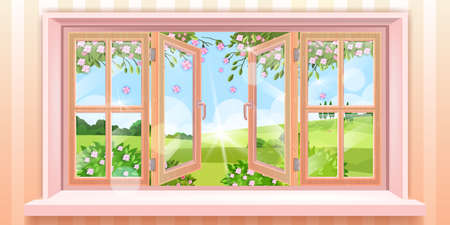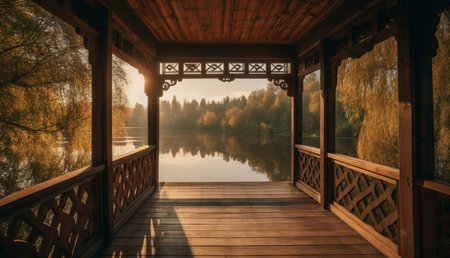Introduction to Feng Shui and British Interiors
When it comes to crafting interiors that exude both beauty and balance, the fusion of Feng Shui principles with quintessentially British design trends offers a compelling approach. Rooted in ancient Chinese philosophy, Feng Shui centres on the art of harmonising spaces by optimising energy flow—known as “qi”—to foster wellbeing, prosperity, and tranquillity. This involves thoughtful consideration of spatial arrangement, natural elements, and the interplay of light and reflection within a room.
In contrast, British interior design is renowned for its timeless elegance, comfort, and understated sophistication. Whether it’s the warmth of an English country house with layered textiles and rich wood finishes, or the sleek minimalism of contemporary London flats peppered with heritage accents, British interiors reflect a nuanced appreciation for both tradition and modernity. This distinctive style draws upon a palette of muted hues, plush furnishings, and an effortless blend of old and new.
By exploring the synergy between these two philosophies—Feng Shui’s mindful spatial choreography and Britain’s refined design sensibilities—we set the stage for a living environment where reflective energy brings harmony and character to every corner. The journey ahead will uncover how these worlds can seamlessly intertwine to create spaces that feel as good as they look.
2. Finding Common Ground: Synergy Between Feng Shui and British Aesthetics
When merging the ancient wisdom of Feng Shui with classic British interior trends, it is essential to identify the aesthetic and philosophical intersections that make this fusion not only possible but also harmonious. Both traditions, though shaped by different histories, share core values—balance, light, and comfort—that act as a bridge for design integration.
Shared Values: The Foundations of Harmony
Feng Shui, rooted in the flow of chi and harmony with nature, emphasises balance, spatial clarity, and the nurturing power of light. Similarly, traditional British interiors celebrate symmetry, natural daylight, and inviting atmospheres—think Georgian proportions or the soft glow through sash windows. At their heart, both styles prioritise comfort without excess and seek to create restorative living spaces.
Comparing Key Design Elements
| Design Element | Feng Shui Approach | Classic British Style |
|---|---|---|
| Balance | Yin-Yang harmony; even distribution of energy | Symmetry in furniture placement; balanced proportions |
| Light | Maximising natural light; avoiding harsh glare | Celebration of daylight; use of soft window treatments |
| Comfort | Smooth energy flow; uncluttered pathways | Cosy textiles; welcoming seating arrangements |
| Nature Connection | Bringing in plants; natural materials like wood and stone | Garden views; timber flooring and period features |
| Reflective Surfaces | Clever use of mirrors to enhance chi and light | Strategic mirror placement to amplify space and brightness |
The Beauty of Parallels: Practical Implications for Modern Homes
This synergy means that a home designed with both Feng Shui principles and British aesthetics doesn’t have to compromise. Instead, it can draw on these shared foundations: prioritising open sightlines, layering textures for visual warmth, and using mirrors not just as decorative accents but as tools for energy flow. By understanding these commonalities, homeowners can confidently blend the timeless elegance of British style with the mindful equilibrium of Feng Shui—creating living spaces that feel both uniquely personal and universally harmonious.

3. Reflective Energy in Practice: Using Mirrors and Light in British Homes
In the realm of Feng Shui, reflective energy is a vital element for cultivating balance and positive flow within an interior space. This principle finds an elegant resonance with the understated charm of British homes, where mirrors and natural light can be thoughtfully curated to elevate both aesthetic and energetic harmony.
The Feng Shui Perspective on Reflective Energy
Feng Shui teaches that mirrors are more than decorative accents—they are conduits for energy, capable of redirecting chi throughout a room. When placed with intention, mirrors can invite vibrancy, dispel stagnation, and visually expand compact British interiors. The goal is not simply reflection, but the mindful amplification of light and life within a home.
Mirrors: Placement with Purpose
In British interiors, where heritage details and architectural quirks abound, mirrors offer a tool to gently enhance spatial perception. Hung opposite windows, they draw in soft daylight—so coveted during grey UK winters—while reflecting garden greenery or period features. Avoid positioning mirrors directly facing doors or beds; instead, angle them to nurture a sense of openness without disrupting the restful energy essential to British domestic life.
Natural Light: Harnessing the UK’s Subtle Glow
Given the UK’s often-muted sunlight, maximising what natural light is available becomes both a design imperative and an act of well-being. Opt for sheer curtains or classic sash windows unobstructed by heavy drapery, allowing daylight to gently diffuse throughout your living spaces. Complement this with carefully positioned mirrors to bounce light into shadowed corners or brighten north-facing rooms, creating the illusion of airiness even on overcast days.
Blending Traditions for Contemporary Harmony
The synergy between Feng Shui’s reflective energy and modern British interior trends lies in restraint and intentionality. Select mirrors with frames that echo local craftsmanship—think antique gilt or simple oak—melding Eastern philosophy with quintessentially British design sensibilities. By honouring both traditions, you cultivate a home that feels expansive, harmonious, and deeply rooted in place.
4. Colour Schemes and Materials: Harmonising with Nature
When weaving the reflective energy of Feng Shui into British interiors, the synergy between colour schemes and materials becomes a vital design touchstone. Both traditions share an appreciation for harmony with nature, but interpret this connection through distinct palettes and tactile experiences. By thoughtfully selecting hues and materials that resonate with both philosophies, you can curate spaces that exude tranquillity and unity, while remaining unmistakably British.
Embracing Colour: A Shared Philosophy
Feng Shui places emphasis on colours that embody the five elements—wood, fire, earth, metal, and water—each fostering a specific type of energy (chi). In British interiors, colour choices often reflect the landscape’s subtle beauty: think muted greens of rolling hills, soft blues from overcast skies, and gentle neutrals reminiscent of stone cottages. Here’s how these approaches align:
| Element (Feng Shui) | Associated Colour | British Interior Equivalent |
|---|---|---|
| Wood | Greens & Browns | Sage green, oak brown |
| Fire | Reds & Oranges | Terracotta accents, russet textiles |
| Earth | Beige & Yellow | Creamy limestone, mustard yellow |
| Metal | White & Grey | Pewter tones, chalky whites |
| Water | Blue & Black | Navy blue features, charcoal trims |
Selecting Materials: Texture Meets Tradition
The tactile aspect of interior design is equally crucial. Feng Shui values natural materials such as bamboo, wood, stone and linen for their grounding qualities. British interiors echo this with their penchant for local woods like oak or ash, woollen textiles, and heritage ceramics. The following guidance ensures your material selections foster a restful yet refined atmosphere:
- Wood: Choose responsibly sourced timber for floors or furnishings to evoke warmth and stability.
- Naturally Dyed Textiles: Embrace linen or wool in earth-inspired hues for drapes or upholstery; these materials breathe life and comfort into any space.
- Ceramics and Stone: Incorporate pottery or flagstone flooring to establish a tactile link to the land—a nod to both British craftsmanship and Feng Shui’s emphasis on groundedness.
- Metals: Use brass or pewter fixtures sparingly to introduce subtle gleam without overwhelming the senses.
Bespoke Blends for Modern Living
The true art lies in creating a dialogue between these traditions. For example, pairing a classic British Windsor chair with a jade-green velvet cushion channels both local heritage and the Wood element’s nurturing spirit. Softly painted walls in duck egg blue can reflect tranquil water energy while maintaining quintessentially British charm.
Guided by Nature’s Palette
Your palette should ultimately be inspired by the world outside your window—whether it’s the dappled light of an English garden or the quiet power of river stones. By mindfully harmonising your colours and materials with nature’s cues and cultural context, you’ll foster a living environment where serenity flows freely and every detail feels intentional.
5. Furniture Placement for Flow and Functionality
In the heart of every British home, furniture is more than an expression of taste—its the architecture of daily life. Blending Feng Shui with British interior trends means finding that sweet spot between energy flow and quintessential comfort. Start by considering the ‘command position’—a key Feng Shui principle—when arranging your sofa or bed. In a classic Victorian terrace or a modern London flat, this often means positioning major pieces so you have a clear view of the main entrance while not being directly in line with it. This encourages positive chi to circulate while maintaining a sense of security.
Maximising space is essential, especially in period properties where rooms can be compact and uniquely shaped. Select multi-functional pieces—like an ottoman with hidden storage or a fold-out dining table—that echo the British penchant for practicality without crowding the room. Allow generous pathways between furniture, ideally at least 60 cm, to promote easy movement and energetic balance. Avoid blocking windows with bulky sofas or wardrobes; natural light is a vital source of reflective energy in both Feng Shui and British design philosophy.
Soft furnishings play their part too. A well-placed armchair by the bay window, layered with textured throws and cushions in earthy tones, invites both relaxation and connection to nature—a subtle nod to biophilic design trends popular across the UK. Arrange seating in a circular or semi-circular layout to foster conversation and community, echoing the warmth of traditional British hospitality.
For workspaces or reading nooks, position desks and chairs so they face outwards rather than towards a wall, symbolising openness to opportunities. Keep clutter at bay with discreet storage solutions—think woven baskets tucked beneath side tables or built-in cabinetry painted in calming shades.
The result? A living environment that honours both the fluidity of Feng Shui and the timeless charm of British interiors, where every item has its place and purpose, allowing energy—and life—to flow freely.
6. Personal Touch: Local Artisans and Mindful Accessories
As we weave together the principles of Feng Shui with quintessentially British interior design, adding a personal touch becomes essential for creating a truly harmonious and reflective environment. The final layer in this blended approach is thoughtfully incorporating locally-sourced British craftsmanship and carefully selected accessories that speak to both tradition and mindful living.
Embracing British Craftsmanship
The United Kingdom is celebrated for its rich heritage of artisanal skills—think hand-thrown pottery from Cornwall, Harris Tweed textiles from Scotland, or bespoke furniture crafted in the Cotswolds. Integrating these elements into your space not only supports local makers but also infuses your home with authentic character. These pieces, imbued with the spirit of their creators, resonate with positive energy while grounding your interiors in British culture.
Mindful Selection of Decorative Accents
In Feng Shui, every object holds meaning and energy. When selecting accessories, opt for items that evoke tranquillity and positivity—perhaps a handblown glass vase that catches the morning light or an antique Welsh wool blanket draped over a reading chair. Choose accents made from natural materials such as oak, clay, or linen to enhance the flow of chi and reflect Britain’s connection to its landscapes.
Cultural Resonance Through Thoughtful Details
Personalising your home isn’t just about displaying cherished objects; it’s about curating a collection that tells your story within a British context. Display locally sourced artworks, vintage finds from London markets, or ceramics glazed in earth tones inspired by the Lake District. Each piece should be chosen with intention, fostering an atmosphere where comfort, elegance, and cultural resonance coexist seamlessly.
By prioritising local artisanship and mindful accessorising, you complete the fusion of Feng Shui principles with contemporary British interior trends—resulting in a living space that feels unique, harmonious, and deeply connected to both place and purpose.


